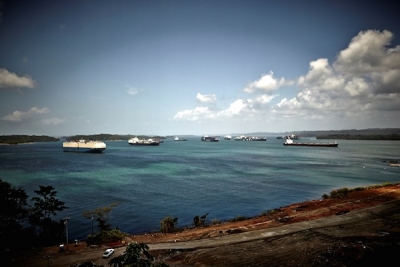Panama Canal bunker market may change in the near future

The Panama Canal bunker market has increased in past years as price levels are becoming increasingly competitive to US bunker hubs like Houston, New Orleans and New York.
Denmark-based global oil and shipping company Monjasa which is also is physically on site in Panama, believes Panama Canal bunker volumes would remain the same in the immediate term, the company told Seatrade Maritime News.
“Overall, we expect more cargo being transported in all segments, with this cargo shipped by fewer vessels than we see today. Neo-panamax and capesize dry cargo vessels will start passing through the expanded canal, which will result in fewer, yet increased single supply volumes.
“However, given that some of these ships will now also be able to call major bunker ports in the US, we expect total supply volume to remian the same. Neither do we foresee any particular developments in regard to more ship owners requesting top-offs in the canal as barging fees remain relatively high,” Monjasa commented.
The scenario changes with the expanded canal since the transit time will shorten substantially. The regular two-day waiting time was used by vessels to bunker but with less waiting time prior to transit, that could force ships to bunker after transit. “Bunker companies will need to tighten co-ordination further and more flexibility will be needed from both suppliers and customers,” the company added.
The canal expansion will increase the number of vessels on longer voyages travelling to the US east coast and reports claims that over the next four years, 10% of container traffic may switch from US west coast to US east coast. “Which could mean changing conditions for the bunker industry and we will see a slow, yet steady, movement towards a less unequal split on total number of west coast and east coast {Balboa vs Cristobal] bunkering operations,” Monjasa said.
In addition, Monjasa believes that bunker companies with close connections to Caribbean ports, those capable to service larger ships, will have a good chance to increase sales. “Caribbean ports fit to receive neo-panamaxes, such as Cartagena, Caucedo, Kingston and Freeport-Bahamas will become increasingly interesting for ship owners, charterers and operators for taxing bunkers.” Even several minor Caribbean ports located close to existing main trade routes are considering ‘dredging deep’ to draw bigger ships.
Larger ships could impact the way the local bunker market operates. “The expected larger vessels and consolidated shipping lines going through the canal may affect some local bunker companies negatively. Companies with less organisational structures and capacity may face difficulties in meeting expectations to compliance and safety. This situation might also lead to heightening the bar when it comes to reliability and alter sales services, with the large shipping companies regard as a matter of course.”
HEADLINES
- Do shipping markets want Biden or Trump for the win?
- All 18 crew safe after fire on Japanese-owned tanker off Singapore
- Singapore launching $44m co-investment initiative for maritime tech start-ups
- Cosco debuts Global Shipping Industry Chain Cooperation Initiative
- US warns of more shipping sanctions
- China continues seaport consolidation as Dalian offer goes unconditional